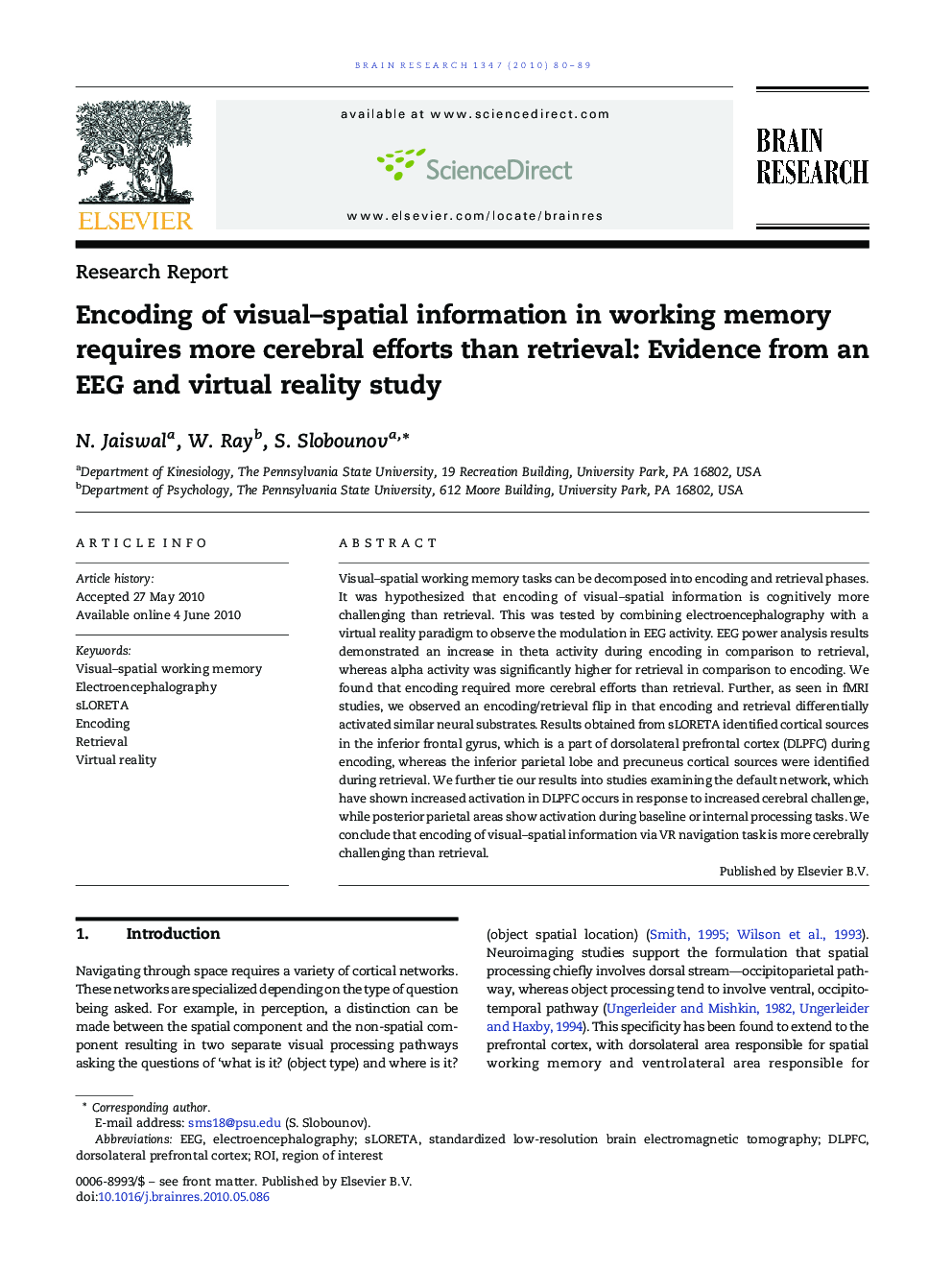| Article ID | Journal | Published Year | Pages | File Type |
|---|---|---|---|---|
| 4326772 | Brain Research | 2010 | 10 Pages |
Visual–spatial working memory tasks can be decomposed into encoding and retrieval phases. It was hypothesized that encoding of visual–spatial information is cognitively more challenging than retrieval. This was tested by combining electroencephalography with a virtual reality paradigm to observe the modulation in EEG activity. EEG power analysis results demonstrated an increase in theta activity during encoding in comparison to retrieval, whereas alpha activity was significantly higher for retrieval in comparison to encoding. We found that encoding required more cerebral efforts than retrieval. Further, as seen in fMRI studies, we observed an encoding/retrieval flip in that encoding and retrieval differentially activated similar neural substrates. Results obtained from sLORETA identified cortical sources in the inferior frontal gyrus, which is a part of dorsolateral prefrontal cortex (DLPFC) during encoding, whereas the inferior parietal lobe and precuneus cortical sources were identified during retrieval. We further tie our results into studies examining the default network, which have shown increased activation in DLPFC occurs in response to increased cerebral challenge, while posterior parietal areas show activation during baseline or internal processing tasks. We conclude that encoding of visual–spatial information via VR navigation task is more cerebrally challenging than retrieval.
